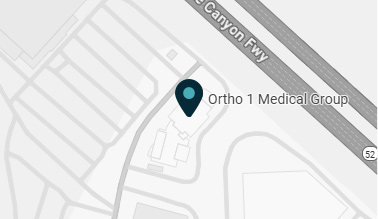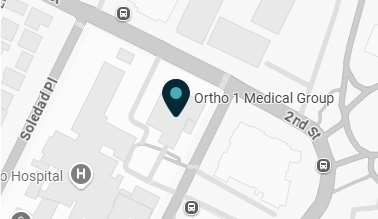It’s easy to take for granted the many things your wrists and hands help you do — until it becomes painful. You use these body parts to carry out different tasks, but some of them put stress on your wrist joints, which can cause carpal tunnel syndrome (CTS).
As a type of entrapment neuropathy, CTS develops when the nerve that helps your wrist and hand feel and move (median nerve) gets compressed. This nerve runs through a small passageway in your wrist, called the carpal tunnel.
When this tunnel gets compressed and narrows, it pushes on the median nerve, causing pain and other frustrating, painful sensations, such as:
- Numbness
- Tingling
- Burning
- Hand weakness
- Shock-like shoot sensations
At Ortho 1 Medical Group, with four offices across San Diego County, California, our providers offer effective solutions that address the pain, numbness, weakness, and other symptoms associated with CTS. We also know that when it comes to CTS, prevention is the best medicine.
Keep reading to learn our top tips for preventing this common condition and the ways we can help you feel better if you develop it.
Top tips for avoiding CTS
The best way to avoid carpal tunnel syndrome is to take care not to do things that put pressure on this sensitive area. Recent studies show you can make changes to the way you carry out work and home activities. Here’s a closer look:
1. Make posture a priority
By improving your posture in your work or hobby areas, you can eliminate or reduce strain on your wrists. This helps you avoid developing carpal tunnel syndrome.
For example, think about making your work area ergonomically friendly, with your wrists placed above your hands when you type. And be mindful of keeping your elbows close to your sides when you type. This reduces pressure on your wrists.
2. Use a lighter touch
All too frequently, we use more force than necessary to carry out our everyday tasks, like typing or using tools in the kitchen. Instead of banging away at your keyboard or gripping tools or utensils tightly, be mindful about using a lighter touch.
3. Take frequent breaks
If your work or hobby means you’re making repetitive wrist movements (e.g., typing; chopping; gardening; knitting; using musical instruments; etc.), be sure to take frequent breaks. You can also switch up the hand you use for different tasks, or pause to stretch your wrist and hands a few times an hour.
4. Try yoga
Yoga is an all-around “good for you” activity. But did you know this low-impact exercise builds strength and flexibility in your shoulders, neck, arms, and wrists, helping prevent carpal tunnel syndrome? If you’re already experiencing symptoms, there are even yoga positions to ease your pain.
5. Change the way you sleep
Do you rest on your hands or curl them under you while you sleep? You could be increasing your chances of getting CTS while you rest.
This is because certain sleeping positions cause your wrists to bend or twist, putting pressure on the delicate carpal tunnel. If you struggle to change your sleep position, try wearing wrist braces at night to keep your wrists and hands in a healthy position.
How we help ease CTS pain
If you don’t treat your CTS, the condition usually worsens over time. However, when you come in as soon as possible, the providers at Ortho 1 Medical Group can slow or reverse your CTS and help you avoid surgery.
Before starting treatment, your provider evaluates your symptoms, reviews your overall health and medical history, examines your wrists and hands, and orders any diagnostic tests necessary to create a personalized carpal tunnel treatment plan.
Most of the time, CTS treatment starts with noninvasive therapies. You can think of CTS treatment as a two-step process: (1) easing pressure on your median nerve; and (2) making lifestyle or activity changes to avoid the things that make your carpal tunnel swell.
Depending on the severity of your CTS and its effects on your life/work, your provider may recommend one or more of the following therapies:
- Wrist splints/braces to keep your wrists and hands aligned correctly (especially at night)
- Stretches and exercises to strengthen your wrist and improve your grip strength
- Steroid injections to alleviate inflammation and pain
If your CTS doesn’t respond to the above therapies, your hand muscles wither, the pain is severe, or your symptoms last six months or longer, surgery — called carpal tunnel release surgery — may be the best treatment for minimizing the pressure on the nerve and easing your pain.
Learn more about preventing carpal tunnel syndrome or get started with treatment by scheduling an appointment with a provider at the San Diego County Ortho 1 Medical Group office nearest you.





















